Related Research Articles

Korean Confucianism is the form of Confucianism that emerged and developed in Korea. One of the most substantial influences in Korean intellectual history was the introduction of Confucian thought as part of the cultural influence from China.
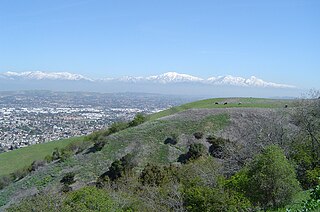
The San Gabriel Valley, often referred to by its initials as SGV, is one of the principal valleys of Southern California, with the city of Los Angeles directly bordering it to the west, and occupying the vast majority of the southeastern part of Los Angeles County. Surrounding landforms and other features include the following:

The Asia–Pacific (APAC) is the region of the world adjoining the western Pacific Ocean. The region's precise boundaries vary depending on context, but countries and territories in Australasia, East Asia, and Southeast Asia are often included. In a wider context, Central Asia, North Asia, the Pacific Islands, South Asia, West Asia, and even Pacific-adjoining countries in the Americas can be included. For example, the Asia-Pacific Economic Cooperation (APEC) includes five countries in the New World. The term has become popular since the late 1980s in commerce, finance, and politics. Despite the heterogeneity of the regions' economies, most individual nations within the zone are emerging markets experiencing rapid growth. Sometimes, the notion of "Asia–Pacific excluding Japan" (APEJ) is considered useful.
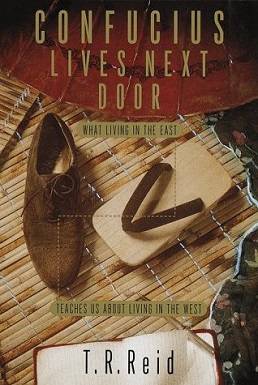
Confucius Lives Next Door: What Living in the East Teaches Us About Living in the West is a 1999 book by Washington Post writer T.R. Reid.
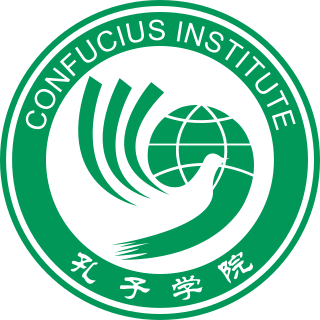
Confucius Institutes are public educational and cultural promotion programs funded and arranged currently by the Chinese International Education Foundation, a government-organized non-governmental organization (GONGO) under the Ministry of Education of the People's Republic of China. The Confucius Institute program was formerly under Hanban, an organization affiliated with the Chinese government. The stated aim of the program is to promote Chinese language and culture, support local Chinese teaching internationally, and facilitate cultural exchanges.

The Asian Century is the projected 21st-century dominance of Asian politics and culture, assuming certain demographic and economic trends persist. The concept of Asian Century parallels the characterisation of the 19th century as Britain's Imperial Century, and the 20th century as the American Century.
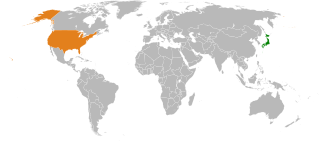
International relations between Japan and the United States began in the late 18th and early 19th century with the diplomatic but force-backed missions of U.S. ship captains James Glynn and Matthew C. Perry to the Tokugawa shogunate. Following the Meiji Restoration, the countries maintained relatively cordial relations. Potential disputes were resolved. Japan acknowledged American control of Hawaii and the Philippines, and the United States reciprocated regarding Korea. Disagreements about Japanese immigration to the U.S. were resolved in 1907. The two were allies against Germany in World War I.

For over 15 centuries, the relationship between Japan and Korea was characterized by cultural exchanges, economic trade, political contact and military confrontations, all of which underlie their relations even today. During the ancient era, exchanges of cultures and ideas between Japan and mainland Asia were common through migration via the Korean Peninsula, and diplomatic contact and trade between the two.
Frank Bray Gibney was an American journalist, editor, writer and scholar. He learned Japanese while in the US Navy during World War II when it was stationed in Japan. As a journalist in Tokyo, he wrote Five Gentlemen of Japan, a popular book about the Japanese that was welcomed for its humanism and for transcending the bitterness of war. A half dozen more books followed on Japan and East Asia. He also wrote on communism in Europe. At the Encyclopædia Britannica, he directed translations. He was also the founder of the Pacific Basin Institute.
William Parsons Woodard, was born in Kalamazoo, Michigan. He was a scholar of Japanese religion, and served as an advisor on religion and cultural resources during the allied command after World War II.
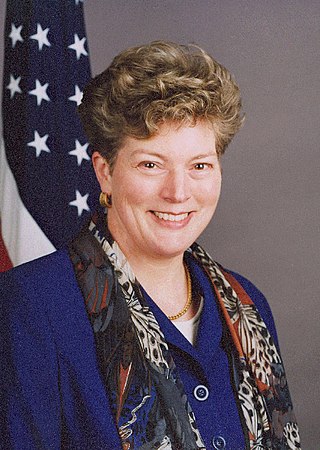
Kathleen Stephens was the United States ambassador to South Korea from 2008 to 2011. She also served as the United States' chargé d'affaires to India from March to December 2014. She currently leads the Korea Economic Institute of America as president and CEO.

The economy of East Asia comprises 1.6 billion people living in six different countries and regions. The region includes several of the world's largest and most prosperous economies: Taiwan, Japan, South Korea, China, Hong Kong, and Macau. It is home to some of the most economically dynamic places in the world, being the site of some of the world's most extended modern economic booms, including the Taiwan miracle (1950–present) in Taiwan, Miracle on the Han River (1974–present) in South Korea, Japanese economic miracle (1950–1990) and the Chinese economic miracle (1983–2010) in China.

East Asia is a region of Asia, which is defined in both geographical and ethno-cultural terms. The modern states of East Asia include China, Japan, Mongolia, North Korea, South Korea, and Taiwan. Hong Kong and Macau, two coastal cities located in the south of China, are autonomous regions under Chinese sovereignty. The economies of Japan, South Korea, China, Taiwan, Hong Kong, and Macau are some of the world's largest and most prosperous economies. East Asia borders Siberia and the Russian Far East to the north, Southeast Asia to the south, South Asia to the southwest, and Central Asia to the west. To the east is the Pacific Ocean and to the southeast is Micronesia.

The territorial conquests of the Empire of Japan in the Western Pacific Ocean and East Asia began in 1895 with its victory over Qing China in the First Sino-Japanese War. Subsequent victories over the Russian Empire and German Empire expanded Japanese rule to Taiwan, Korea, Micronesia, southern Sakhalin, several concessions in China, and the South Manchuria Railway. In 1931, Japan invaded Manchuria, resulting in the establishment of the puppet state of Manchukuo the following year; thereafter, Japan adopted a policy of founding and supporting puppet states in conquered regions. These conquered territories became the basis for the Greater East Asia Co-Prosperity Sphere in 1940.
The Confucius Institute (CI) program, which began establishing centers for Chinese language instruction in 2004, has been the subject of criticisms, concerns, and controversies during its international expansion.

Dru Curtis Gladney was an American anthropologist who was president of the Pacific Basin Institute at Pomona College and a professor of anthropology there. Gladney authored four books and more than 100 academic articles and book chapters on topics spanning the Asian continent.

John Curtis Perry also known as John Perry is an East Asian and Oceanic studies professor and historian. He is the Henry Willard Denison Professor Emeritus of History at the Fletcher School of Law and Diplomacy, Tufts University. He was also the director of that school's Maritime Studies program and founding president of the Institute for Global Maritime Studies, until his retirement in 2014.
Japan during World War II refers to the history of the Empire of Japan during World War II. This includes the invasion of the Republic of China, the annexation of French Indochina and the subsequent invasion of British India, the Pacific War and the surrender of Japan.
Kaya Press is an independent non-profit publisher of writers of the Asian and Pacific Islander diaspora. Founded in 1994 by the postmodern Korean writer Soo Kyung Kim, Kaya Press is currently housed in the Department of American Studies and Ethnicity at the University of Southern California.
East Asia–United States relations covers American relations with the region as a whole, as well as summaries of relations with China, Japan, Korea, Taiwan and smaller places. It includes diplomatic, military, economic, social and cultural ties. The emphasis is on historical developments.